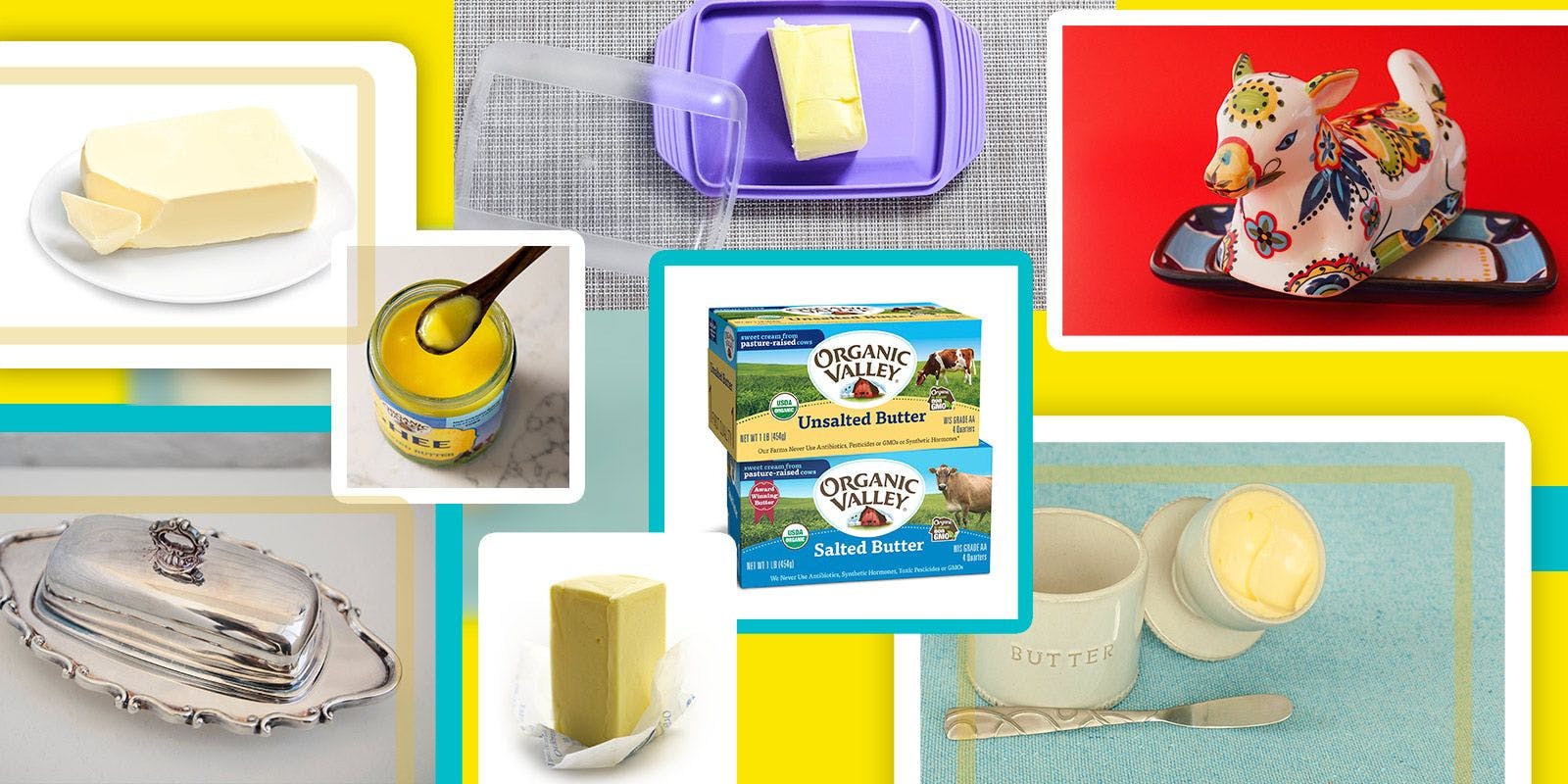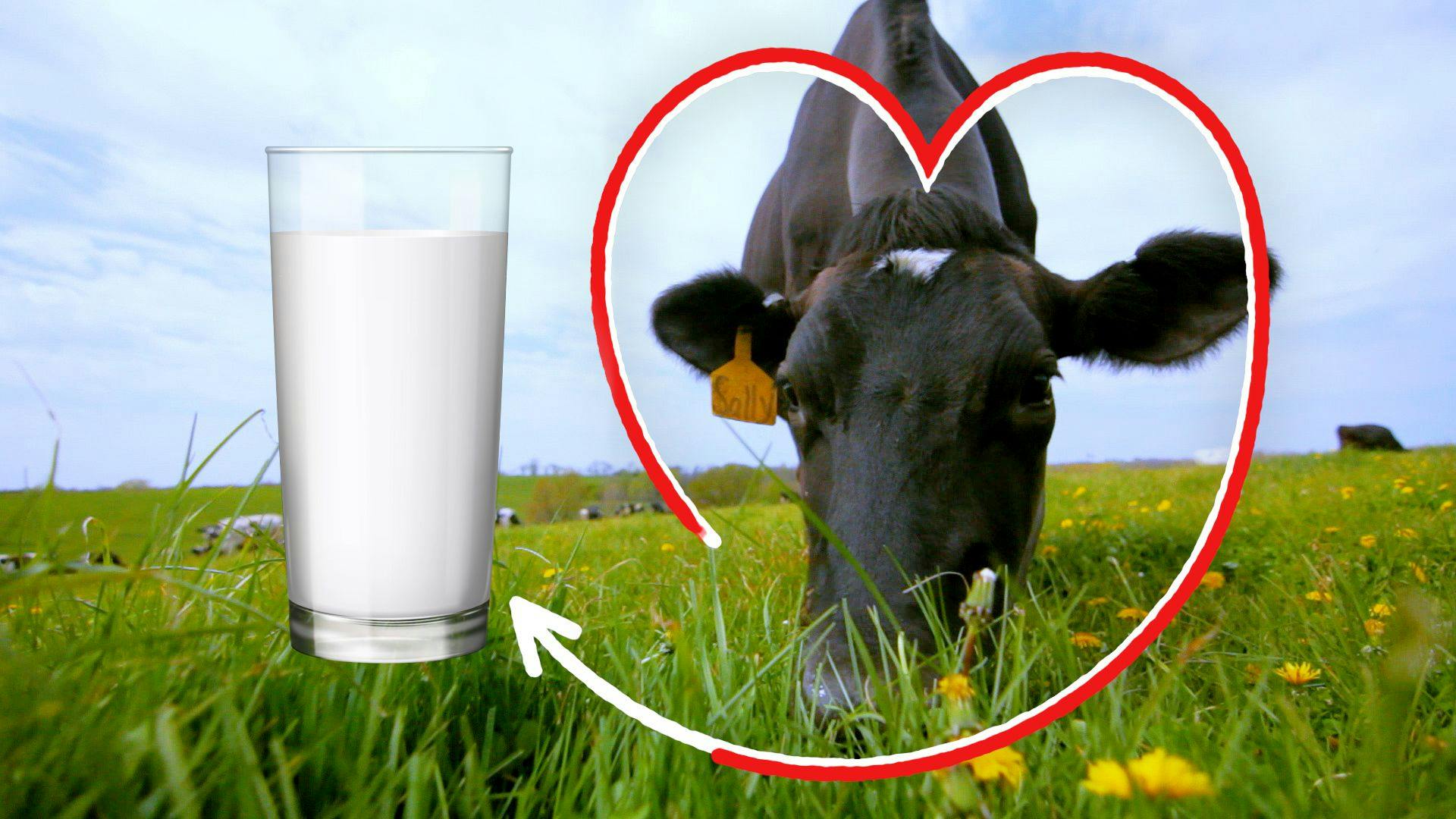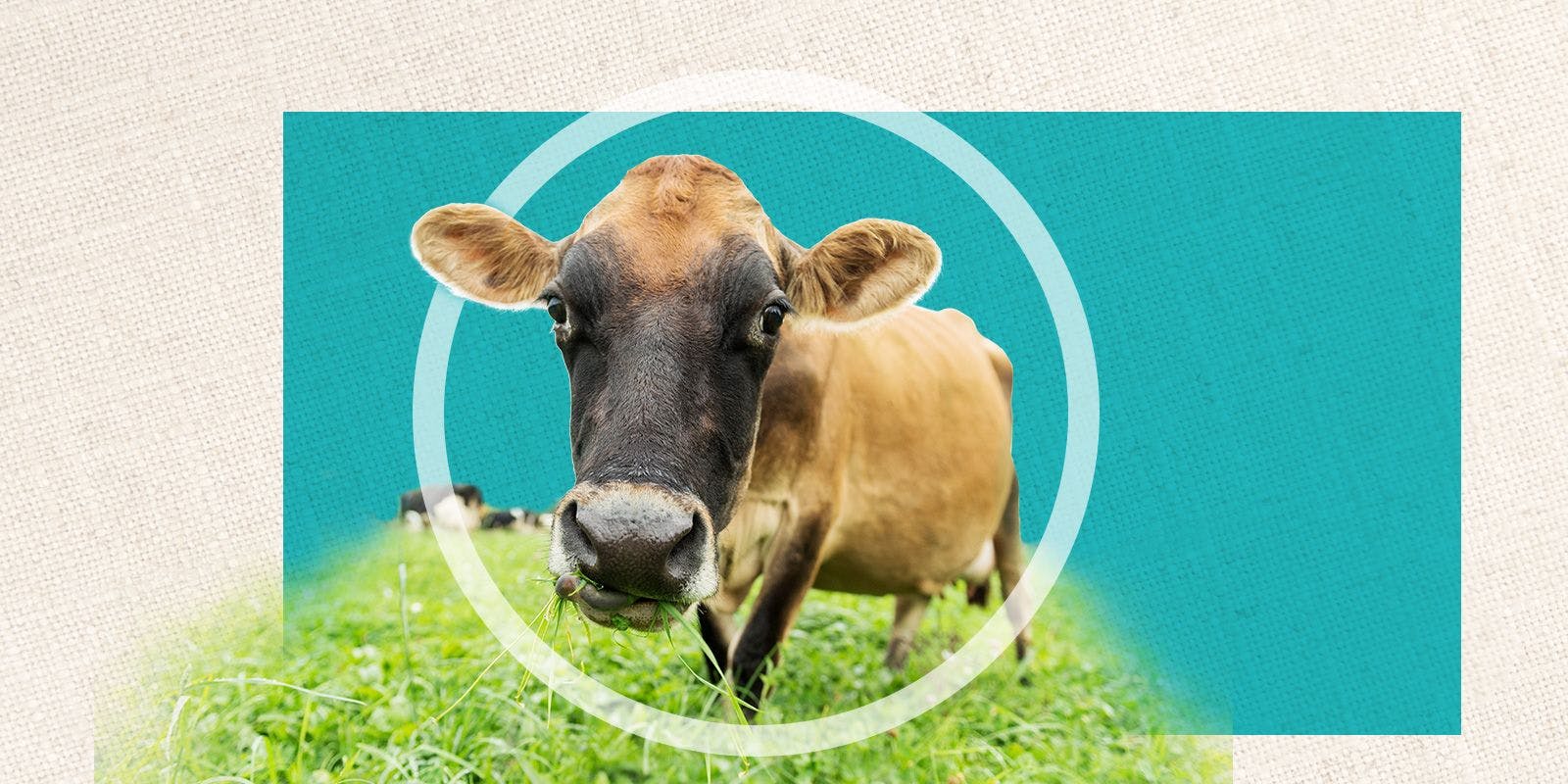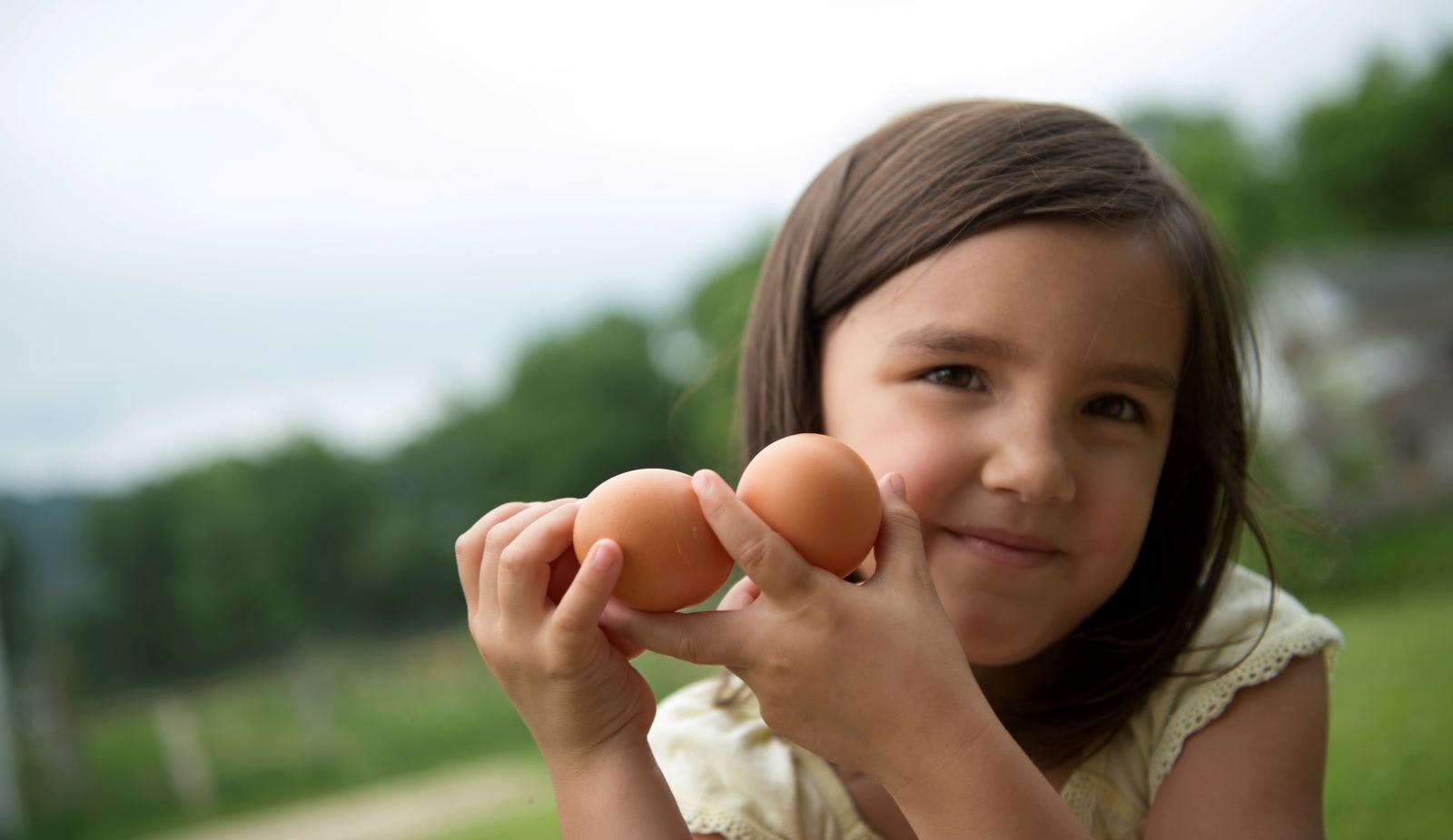
Food
What Is Cheese?
No food fascinates us quite like cheese, whether it’s arranged on a beautiful platter, grated over pasta, or melted between two slices of bread. But where does it come from? When was cheese invented, and how is it made? Learn all about cheese, including its history, the cheesemaking process, and how to choose the very best cheese for your family.
What Kind of Food is Cheese?
Cheese is a dairy product made by fermenting milk and draining off the excess liquid. Depending on the style, cheese can range in flavor from mild and sweet to savory and nutty to funky and pungent. It can be soft and spreadable, creamy and smooth, or firm and crumbly. It’s been enjoyed in cultures around the world for thousands of years, and today, cheesemaking takes place on every continent except Antarctica.
Unlike fluid milk, which spoils quickly, most cheeses are made to age for weeks, months, or even years, and some varieties taste even better with time. Many people who can’t tolerate lactose, the main sugar in milk, find that they are able to enjoy cheese and other fermented dairy products because fermentation converts lactose into lactic acid.
Low-Lactose Cheese
Other steps in the cheesemaking process can also reduce lactose in cheese. As cheese ages, residual lactose is consumed as microbes and enzymes break down cheese, so long-aged varieties like parmesan and sharp cheddar tend to contain lower levels of lactose than fresh varieties.
People of all ages—including babies—love cheese for its luscious textures, savory flavors, and many uses in the kitchen. Serve it on a charcuterie board with tasty accompaniments like crackers and fruit, slice it and put it on a sandwich, or grab a piece when you’re hankering for a quick and tasty snack.
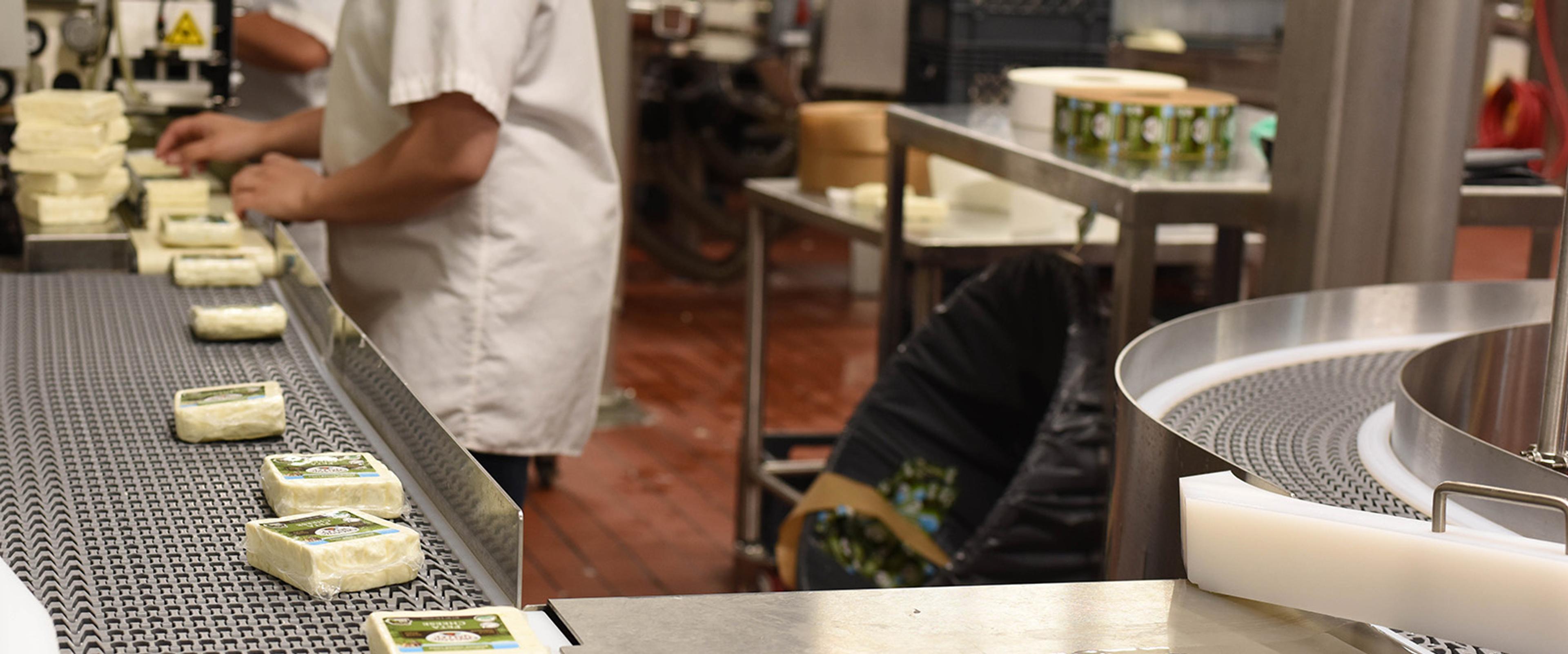
Blocks of Organic Valley Feta Cheese go down a conveyor
The History of Cheese
We have archaeological evidence that humans have consumed dairy for at least 9,000 years. But it’s unlikely that the earliest dairying civilizations in southwest Asia drank fluid milk the way we do today. In fact, until about 5,000 years ago, adult humans in what is now Europe couldn’t digest the lactose in fluid milk.
So how were early humans consuming dairy? In the form of cheese, of course! In hot desert climates with no refrigeration, natural fermentation would have transformed milk into a tangy, yogurt-like cheese pretty quickly, converting its lactose into lactic acid and making it easy for adults to digest. Straining off the liquid and salting the cheese to preserve it for long periods would have created a cheese similar to feta.
But cheese did more than help early civilizations survive—it played a role in spirituality and even in the development of writing. Five thousand years ago, ancient Sumerians in what’s now southern Iraq worshiped the goddess Inanna by bringing offerings of cheese and butter to her temple. Those dairy products were so important that administrators kept track of their stores by scratching marks on clay tablets, an early form of written language.
Dairy farming and cheesemaking spread throughout the Mediterranean and into Europe, North Africa, and South Asia, adapting to local environments and cultures. Europe’s cool climate was very well suited to raising dairy animals and aging cheese, and there, many of the styles we love—like cheddar, Swiss, parmesan, and blue cheese—were born.
Today, the United States is the largest producer of cheese in the world, followed by Germany and France. If Organic Valley’s home state of Wisconsin were a country, it would rank an impressive fourth on that list!
What Exactly is Cheese Made Of?
There are hundreds of types of cheese made around the world, and most of them have just four ingredients: milk, cultures, enzymes, and salt.
The Main Ingredient in Cheese
Milk is by far the main ingredient in cheese, so quality really matters. Organic Valley makes sure its milk is the best it can be by working only with U.S. Department of Agriculture Certified Organic dairies that raise their cows on pasture. Our milk comes from cows that have never been treated with antibiotics or synthetic hormones, or eaten feed that contains pesticides or GMOs. They also get lots of TLC! In fact, we make sure our member farms give their cows 50% more time outside than USDA organic standards require, which leads to creamy, great-tasting milk.

Cows munch on pasture and get their ears scratched at the Gowdy organic farm in New Hampshire.
Another important aspect of making sure our cheese is top quality is keeping supply chains short, so the milk is ultra-fresh.
“We focus on ensuring that our milk for our cheese is as close to the plant as possible to get the best quality possible,” said Devin Thorson, Organic Valley’s product development manager for cheese. That means working with small-scale farms local to where the cheese is produced. This also reduces cheese’s carbon footprint since milk isn’t being trucked long distances to the plant.
Organic Valley’s fluid milk undergoes 57 quality checks on the journey from the milking parlor to your grocery store, and the milk we use to make cheese is no different. Milk for cheesemaking is tested to ensure it’s safe, free of antibiotics, and contains the right levels of fat and protein to make amazing cheese.
Cultures in Cheese
In cheesemaking, cultures are “good microbes”—including beneficial bacteria, molds, and yeasts—that ferment the milk and give each style of cheese its unique flavor and texture. “Cultures are the life of the cheese. It’s a living thing,” Thorson said.
Enzymes: Transforming Milk
Enzymes are the magic ingredient that transforms liquid milk into solid curd by milk casein proteins that stick to each other. Also known as rennet, these enzymes can come from animal, vegetable, or microbial sources. Other enzymes, such as lipase, are sometimes added to certain types of cheese to create specific flavors in the finished product.
Salt in Cheese
Salt doesn’t just enhance the flavor of cheese. It affects its texture and helps regulate microbes and enzymes as the cheese ripens. Salt also acts as a natural preservative.
The Cheesemaking Process
You may have heard that cheese is made of rotten milk, but that couldn’t be further from the truth. Cheesemaking is carefully controlled from start to finish. Organic Valley adheres to the highest standards of sanitation and care to make sure only the freshest, best-quality milk is used.
The cheesemaking process captures and preserves the nutrient-rich solids in milk—fat, protein, and minerals—while leaving behind most of the liquid. That’s why it takes about 10 pounds of milk to make just 1 pound of cheese.
First, the cheesemaker gently warms the milk in a large vat and adds cultures. These beneficial microbes consume lactose and convert it into lactic acid, lowering the pH of the milk and making it easier to digest.
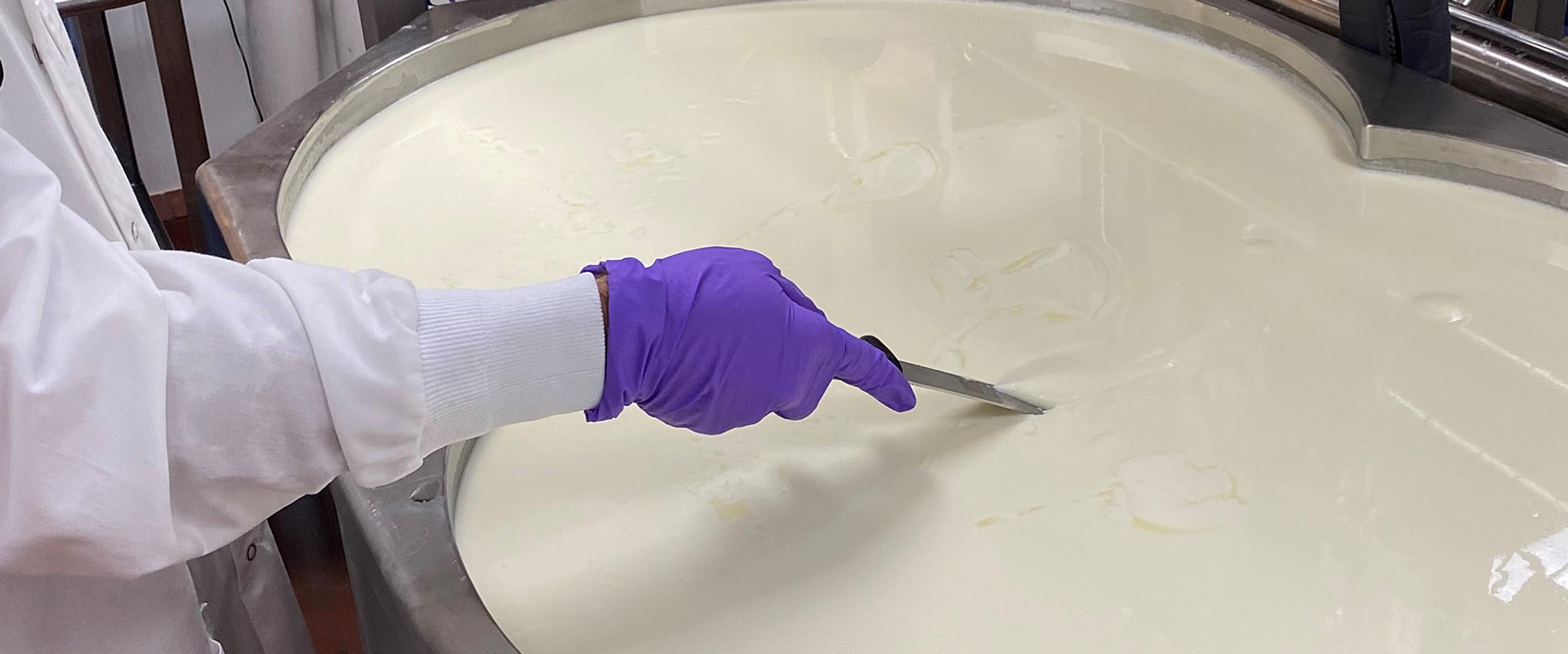
An organic cheesemaker checks the set of the vat to determine if it is ready to cut to separate the curds from the whey.
Next, the cheesemaker stirs in enzymes that coagulate the milk, turning it into a bouncy, gel-like solid. They cut the solid which creates curd (the solids) and whey (the liquid). When making certain styles like Swiss or parmesan, the cheesemaker may stir and gently heat the curd to remove even more whey.
After draining the whey, the curds are then directly salted or placed into forms to be salted later. The application of salt depends on the type of cheese being produced. Cheeses like cheddar, colby, and Monterey Jack have their curds salted before being placed into forms. Cheeses like mozzarella, Swiss, parmesan, and feta are formed and then placed into a salty brine to slowly absorb the salt.
The freshly formed wheels may be pressed with heavy weights to push out yet more whey and help the curds knit together into a smooth, solid wheel.
Some cheeses, like fresh mozzarella or fresh chèvre, are ready to eat as soon as cheesemaking is finished. But most varieties must age for anywhere from one month to a few years before they’re ready for us to enjoy.
How does the cheesemaker know when the cheese is at peak deliciousness? At Organic Valley, every single batch of cheese is tested for quality before it can be sold at market.
“We look at flavor, texture, aroma, appearance, and functionality to ensure that it's up to our internal standards and we would feel good about putting our name on that cheese,” Thorson said. The quality assurance team isn’t afraid to keep aging cheese until it tastes its absolute best. Organic Valley’s sharp cheddar ages for at least six months, but it’s not uncommon for batches to age for as long as 10 to 14 months if it leads to fantastic flavor.

Cheese sandwiches and fruit are a hit
Is Cheese Nutritious?
We know cheese tastes great. But is it good for you?
Cheese is a great source of the fat and protein our bodies need. It also contains important micronutrients like calcium for strong bones, vitamins A and B12, zinc, and phosphorus.
Organic Valley’s Grassmilk® cheeses offer even more nutrition. Because they’re made with the milk of 100% grass-fed cows, they contain much more omega-3 fatty acids than cheese made from conventional grain-fed cows. Omega-3 fatty acids are important for growing bodies, particularly for bone and eye health.
Is Cheese Vegetarian or Nonvegetarian?
Cheese is a great option for omnivores and vegetarians alike, but certain styles or brands of cheese are not suitable for vegetarians. The rennet enzymes used in cheesemaking can be derived from animal or vegetarian sources, but labels don’t always state whether those enzymes are vegetarian or not.
Organic Valley uses vegetarian rennet enzymes in all its cheeses. However, vegetarian cheese lovers should note that Organic Valley Blue Cheese Crumbles are not suitable for vegetarians because they’re made with an animal-derived enzyme that helps give this cheese its signature flavor.

How to Source the Best Cheese
Cheese is a delicious and nutritious dairy product humans have enjoyed for thousands of years. The best cheeses you can buy are made with the highest standards of safety, sustainability, and flavor.
By using only the best-quality milk sourced from USDA Certified Organic family farms raising cows on pasture, performing quality checks at every step, and testing each batch of cheese for peak flavor, Organic Valley makes a variety of flavorful, good-for-you cheeses that are perfect for an easy weeknight dinner, a healthy school lunch, or a bountiful cheese plate.
“There’s not a lot of mainstream national producers that have blue cheese and feta cheese and parmesan and muenster as well,” Thorson said. “I think it’s nice to have all these offerings and give our consumers a chance to branch out into a cheese that might be new for them. It’s a familiar name and a trusted name that they should feel good about purchasing from.”
Alexandra Jones is a writer, author, and former cheesemonger based in Philadelphia. After a career working with sustainable farmers introduced her to the world of cheese, she’s dedicated to educating eaters about this fascinating food. Her book Stuff Every Cheese Lover Should Know was released in 2020.
Alexandra Jones is a writer, author and former cheesemonger based in Philadelphia. After a career working with sustainable farmers introduced her to the world of cheese, she’s dedicated to educating eaters about this fascinating food. Her book Stuff Every Cheese Lover Should Know was released in 2020.
Related Articles
- Tags:
- high quality products














